Eat These 10 High-Protein Foods to Melt Fat and Sculpt Muscle Fast
Kait Malthaner (@HealthCoachKait) is a health coach and social media influencer who regularly shares diet and fitness tips with her followers across several platforms. In a recent viral video, she reveals protein sources that will help you burn fat fast. "Protein is the most important nutrient," she says. "But here's the problem: most people are not getting anywhere near enough. You might think you're eating enough protein, but the reality is you're probably not hitting the mark." According to Kait, everyone should be consuming at least one gram of protein per pound of their ideal body weight every single day. "Yet most people are falling short of this target. One of the main reasons is because a lot of people are overestimating how much protein they're eating," she says. In the video, she goes on to reveal "what 30 grams of protein looks like across 10 of the best protein-rich foods."
Beef
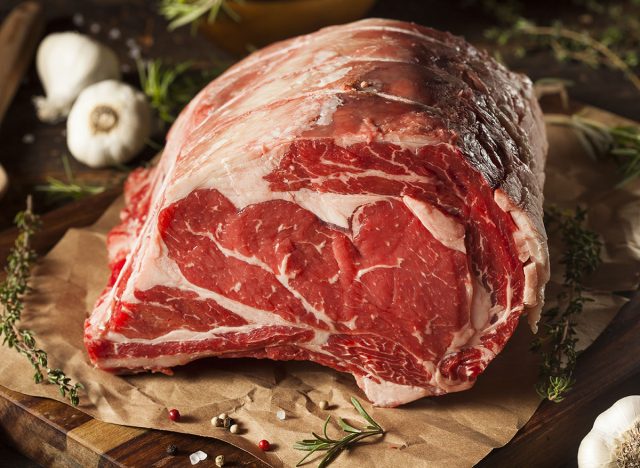
The first food is beef. "Beef has been unfairly demonized in the past, but the truth is it's an excellent protein source and health food. In general, the protein it contains is high quality. It's easy for our body to absorb, and it's also a complete protein source, meaning it contains all the essential amino acids we need in the right amounts," she reveals in the video. "Just four ounces or about 113 grams of cooked beef will give you approximately 30 grams of protein." Not only is beef rich in protein, but it's also packed with essential nutrients like iron, zinc, selenium, and B vitamins.
Eggs
Next up, eggs. "Eggs are an incredible source of protein and also healthy fat soluble vitamins," she says. Because two eggs only have 12 to 14 grams of protein and to hit 30 grams you would need to eat 5, she recommends combining eggs with other protein sources. "Eggs have perfectly balanced macronutrients. The whites are nearly all protein, while the yolks are rich in those healthy fats, vitamins, minerals, and antioxidants," she says. This makes them great for controlling blood sugar.
Greek Yogurt
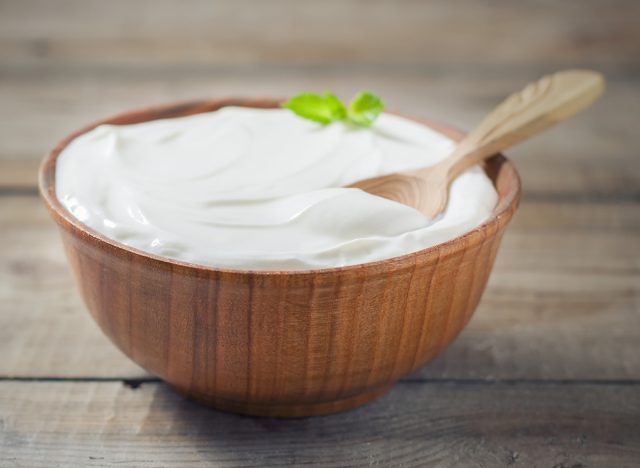
Number three, Greek yogurt. "This is another fantastic food for boosting your protein intake," she says. "Greek yogurt has nearly twice the protein content of regular yogurt, which is why I recommend it specifically." To get to 30 grams of protein, you need to have roughly two cups of yogurt. "This might sound like a lot, but again, if you mix it with other protein sources, if you incorporate it into your cooking, Greek yogurt can be a good alternative for making things."
RELATED: How to Burn 800 Calories Per Day Without Exercising, According to a Neuroscientist
Chicken
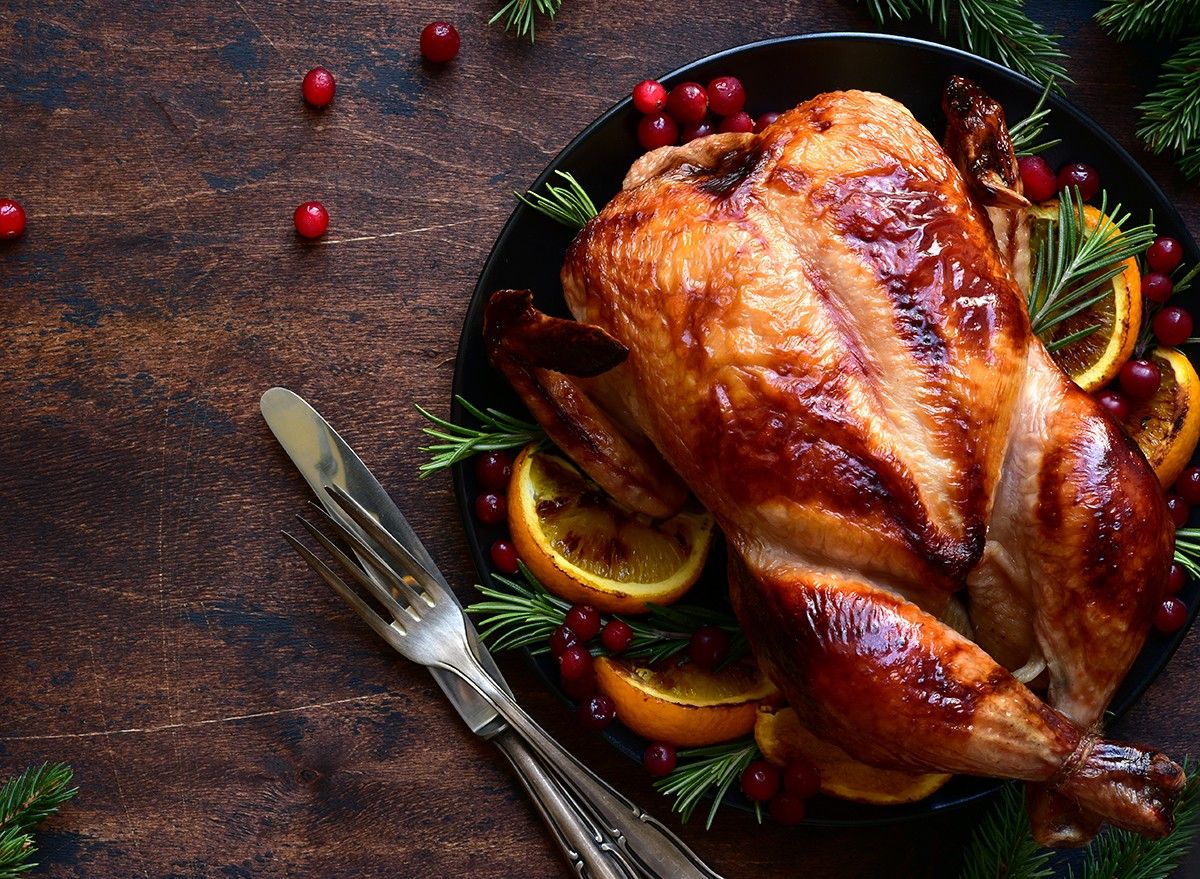
Number four, chicken. "Chicken is a go-to protein source for many, and I understand why," she says. "It's versatile, easy to cook with and rich in protein. 30 grams is about four ounces or 113 grams. "And this is for chicken breast. If you're having chicken that's a little bit more fatty. So something like chicken thigh, you're gonna have to have a little bit more because there's more fat and a little bit less protein just based on weight," she says. "Chicken thighs with the skin are a great option because they provide not only protein, but the skin also provides collagen. Collagen is a type of protein that's essential for maintaining the health of our skin, hair, nails, joints, and connective tissue. As we age, our bodies produce less and less collagen, and this is why our skin starts to wrinkle. This is why sometimes our hair can fall out. It all comes back to less collagen as we age."
Wild Caught Salmon
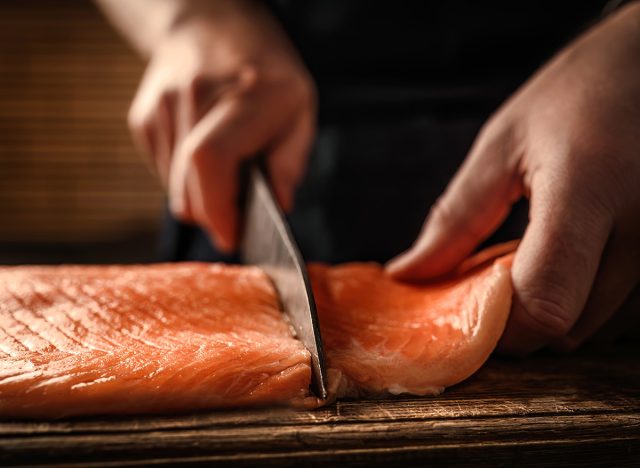
Number five, wild caught salmon. "Another fantastic protein source, which also comes with a lot of healthy fat. And omega-3s in particular, the Omega-3 fatty acids, DHA and EPA are crucial for reducing inflammation in the body, which can be beneficial for weight loss and insulin resistance," she says. "To get 30 grams of protein, you need about five ounces or 140 grams of salmon, basically a filet of salmon and you should be good."
RELATED: 8 Foods I Will Never Eat Again After Losing 110 Pounds
Whey Protein
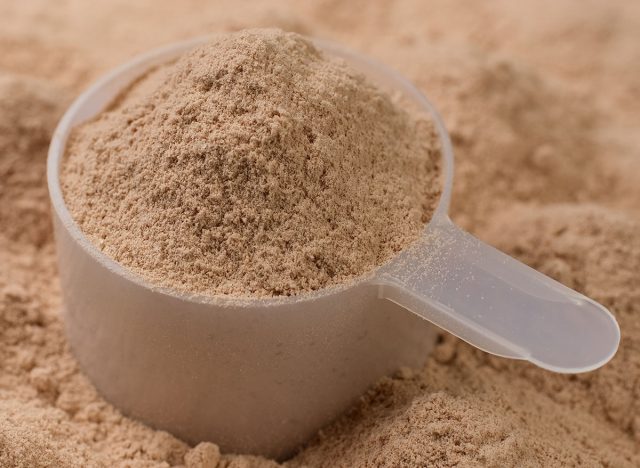
Number six, whey protein powder. "If you are finding it difficult to meet that one gram of protein per pound of your ideal body weight in protein every single day, then protein powder can be incorporated," she says, noting that "you want to be getting most of your protein in from whole food sources." One scoop of high quality protein powder typically provides about 20 to 25 grams of protein. "So you need about one and a half to two scoops in order to hit that 30 gram mark," she says. Stick to those that don't have any artificial sweeteners or added sugar.
Shellfish
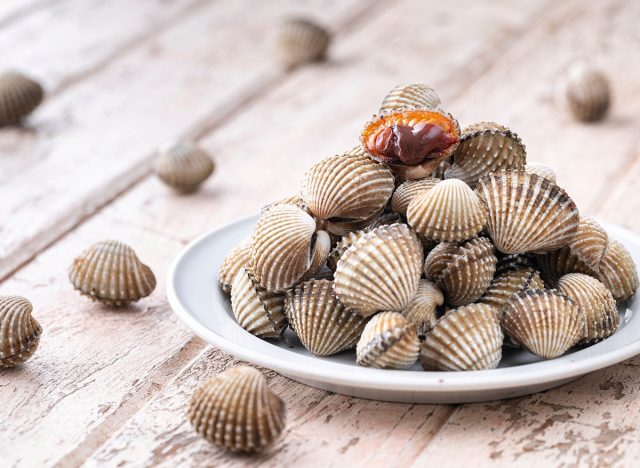
Next up, shellfish. "Shrimp, oysters, and scallops are all excellent sources of protein," she says. Because they are leaner, "make sure you're adding fat. You can add a nice grass-fed butter or something along those lines and olive oil," she notes. "To get 30 grams of protein, you'll need about six ounces or 170 grams of cooked shrimp. Shellfish are extremely high in other micronutrients as well, one of which is selenium, which is vital for proper thyroid function and zinc, which plays a key role in hormone production and immune function. Oysters in particular are one of the richest sources of zinc."
RELATED: From Size 16 to Slim: I Shed 50 Pounds Eating These Exact Delicious Meals
Pork
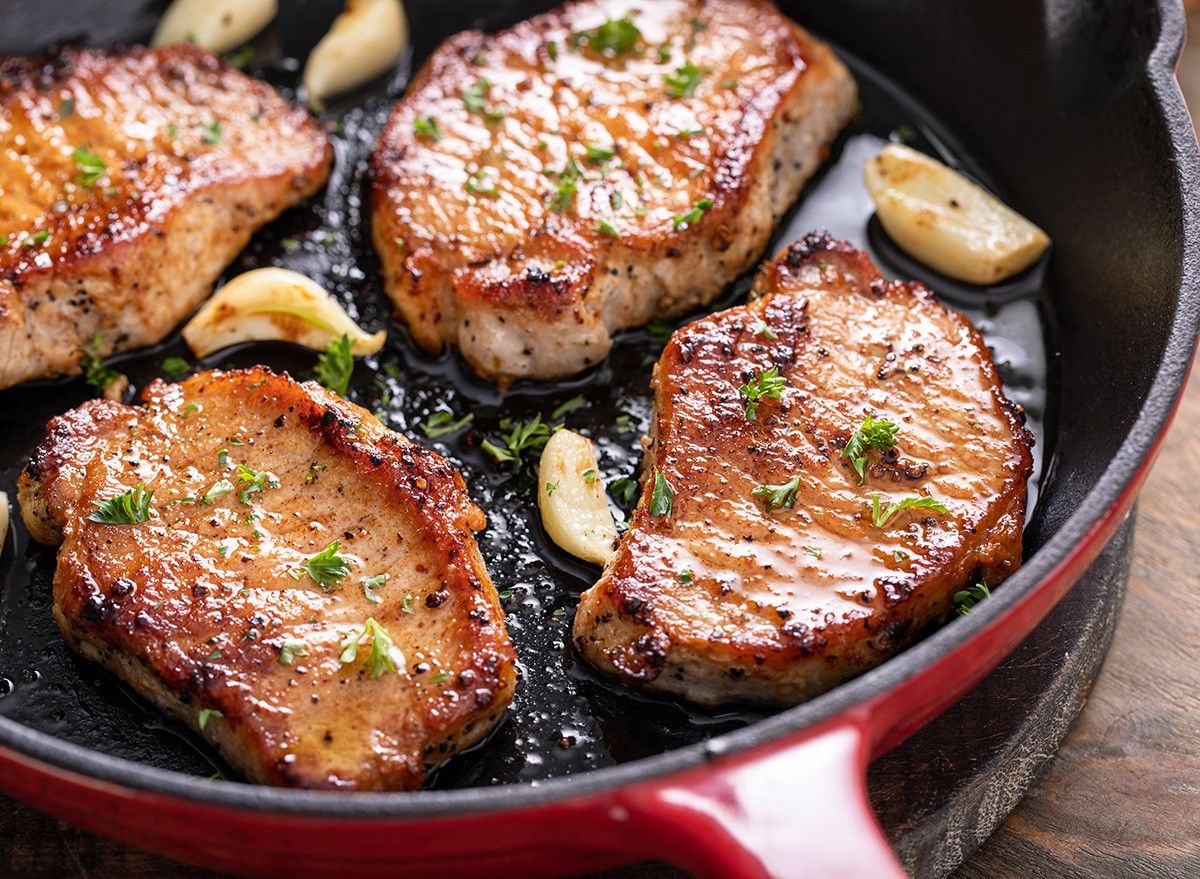
Number eight, pork. "A four ounce or 113 gram serving of cooked pork tenderloin will provide you with about 30 grams of protein. Now, quality is key when it comes to pork posture. Raised. Pork is a lot lower in inflammatory omega sixes, and this is what you wanna look out for," she says.
Lamb
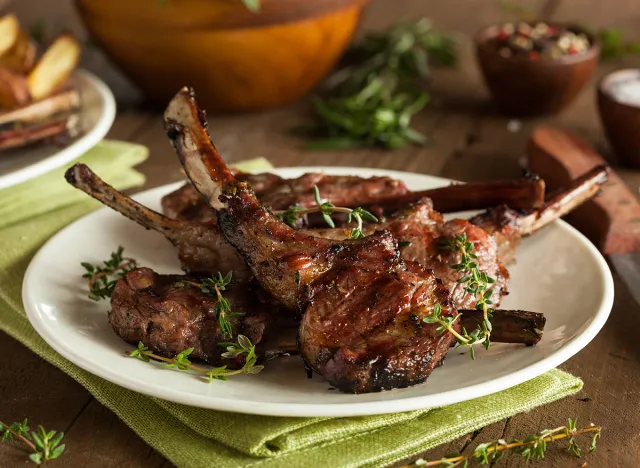
Number nine, Lamb, "a highly underrated protein source that's very high in nutrients, along with being a great source of protein," she explains, noting that it is "one of the richest non seafood sources of Omega-3 fatty acids and a good source of iron and creatine, which are essential for energy production and muscle health." To get 30 grams of protein, you need to have about four ounces or 130 grams.
RELATED: Top 8 Foods You Should Eat Every Day To Improve Memory
Kangaroo
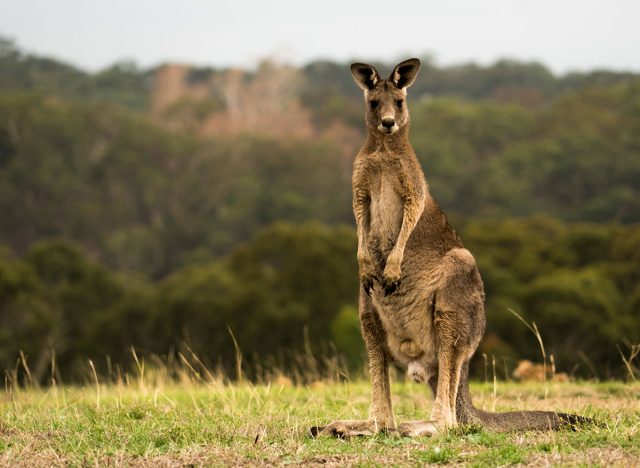
Number 10, kangaroo, "which I know might catch some of you off guard, but it's actually very common here in Australia," she says. "Kangaroo is a red meat, but unlike beef or lamb, it's actually very lean. It's something like 99% protein. You need to have about three ounces of it in order to meet that 30 grams. Now, again, to reiterate, because kangaroo is so lean, you really need to make sure you're getting it with enough fat. You can do this by cooking it in some olive oil or serving it with a side of avocado or some roasted nuts." And if you enjoyed this article, take advantage of these 15 Quick Ways to Lose Body Fat Percentage in a Week.





